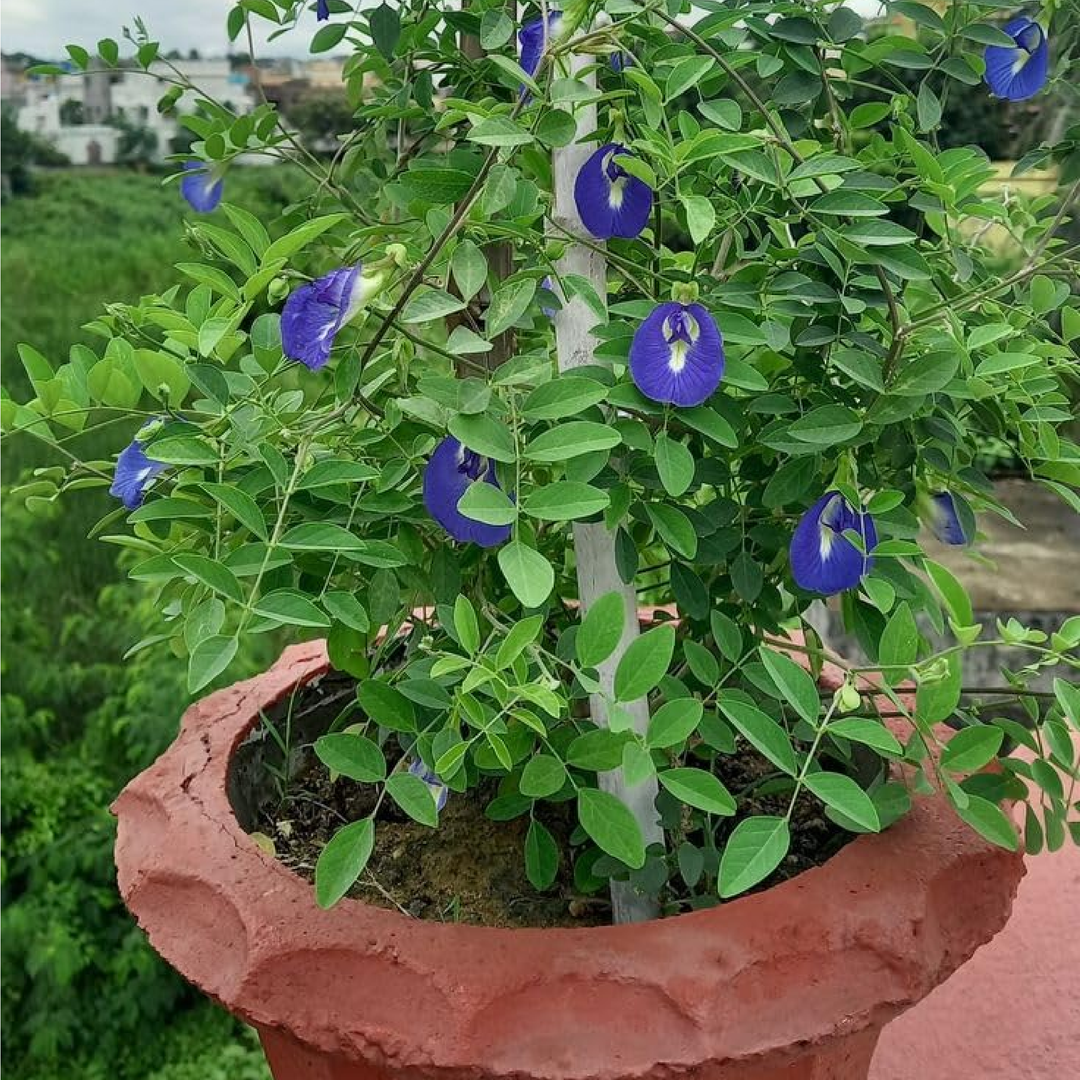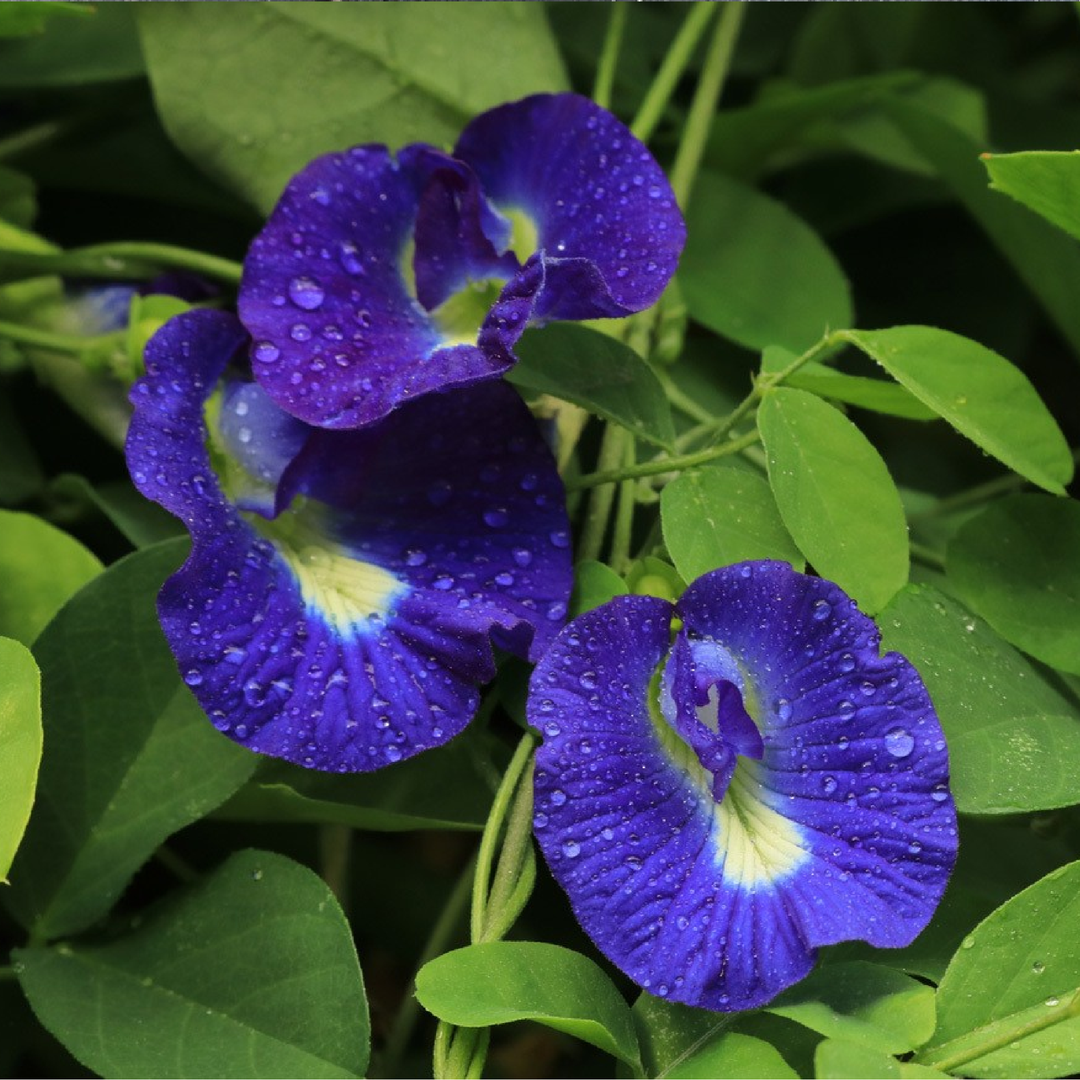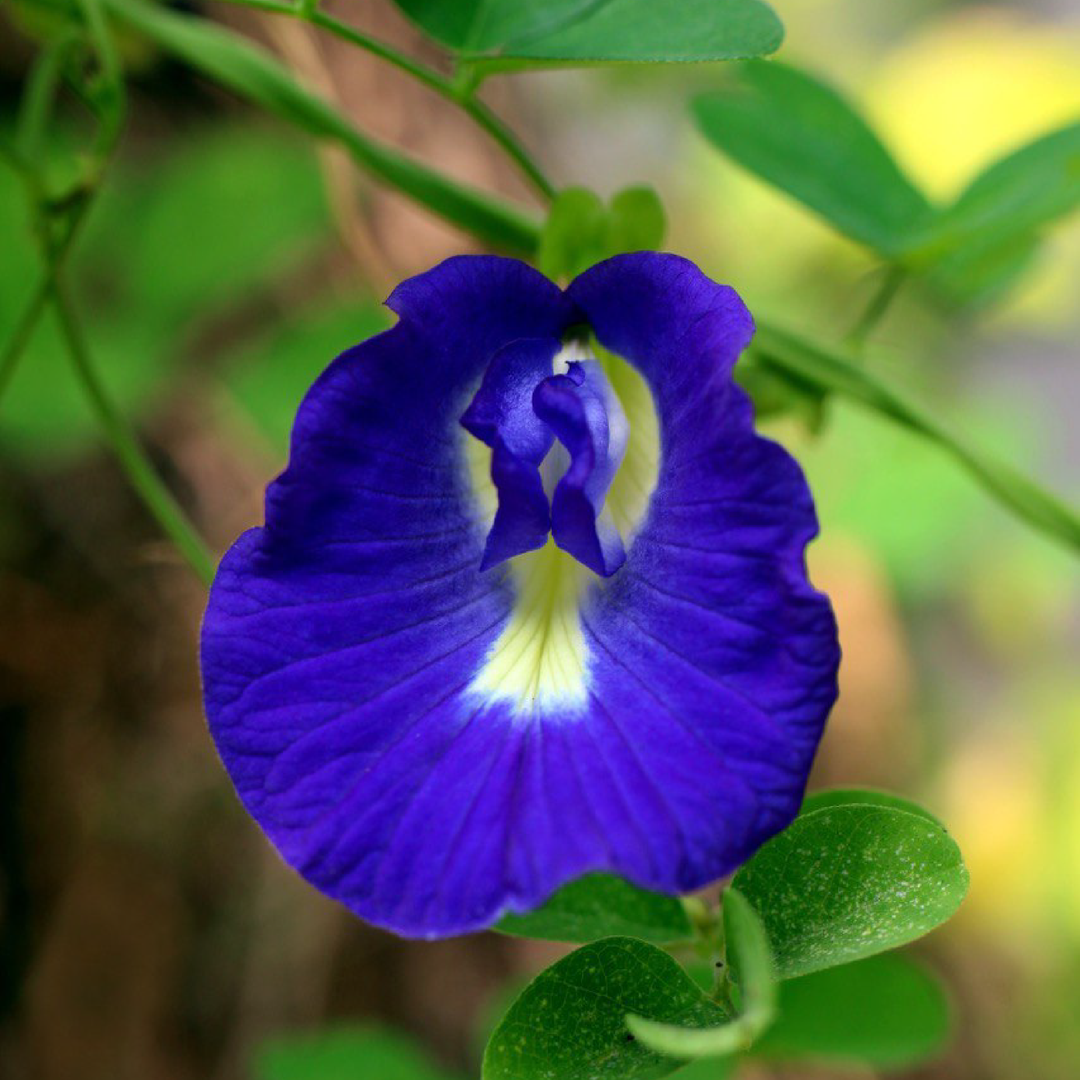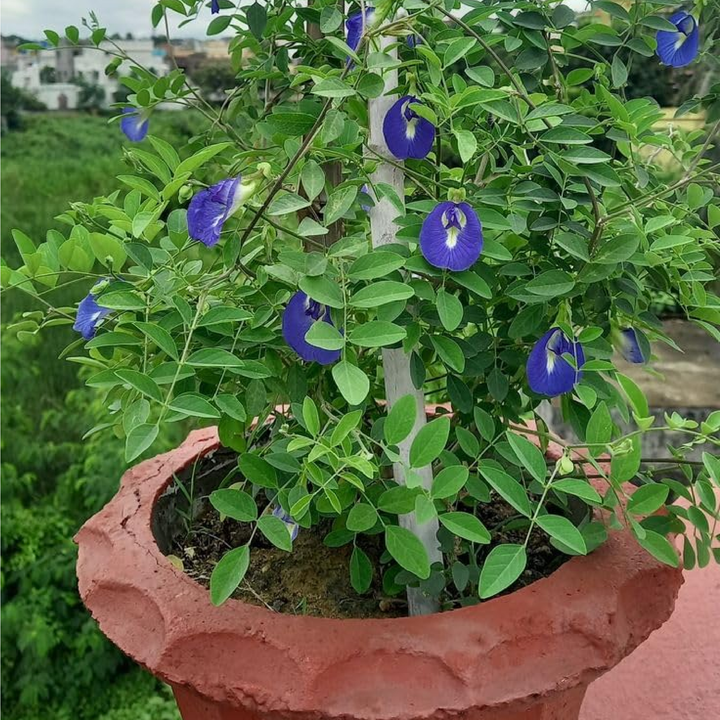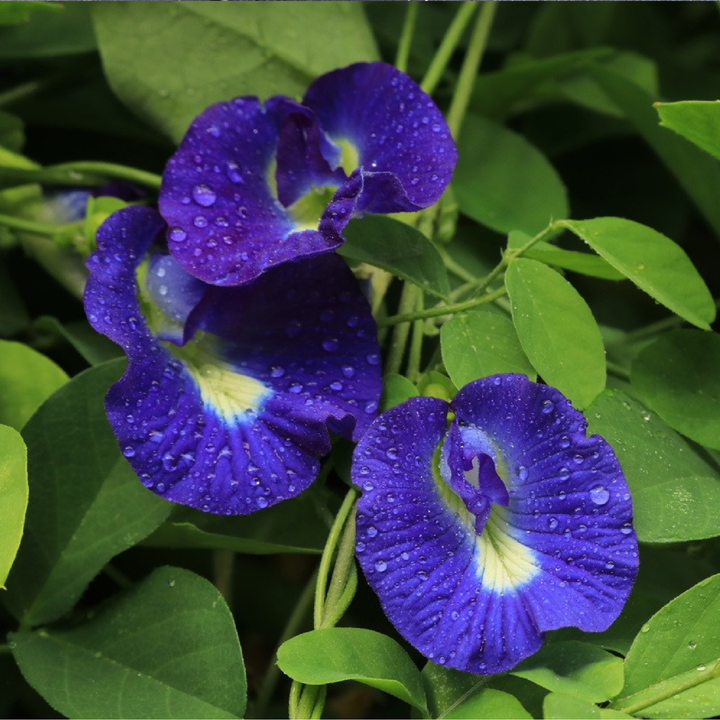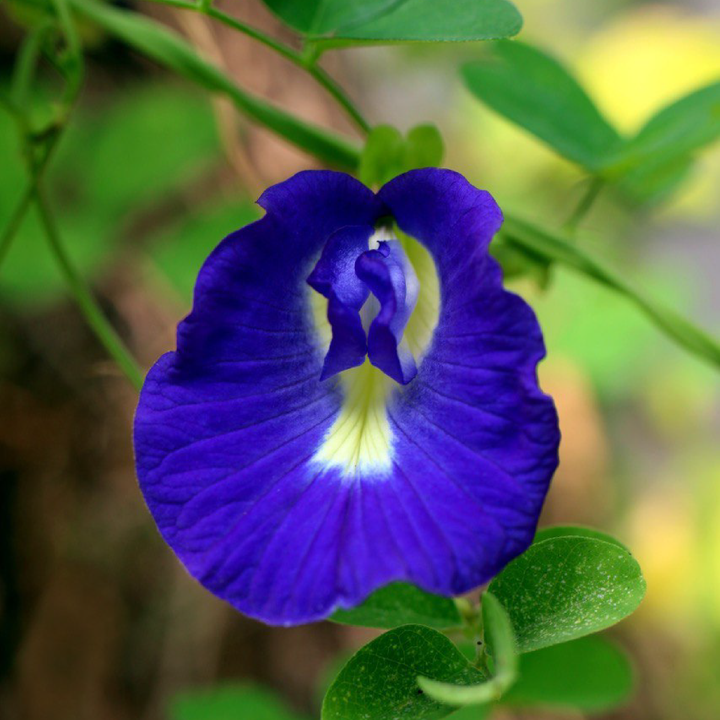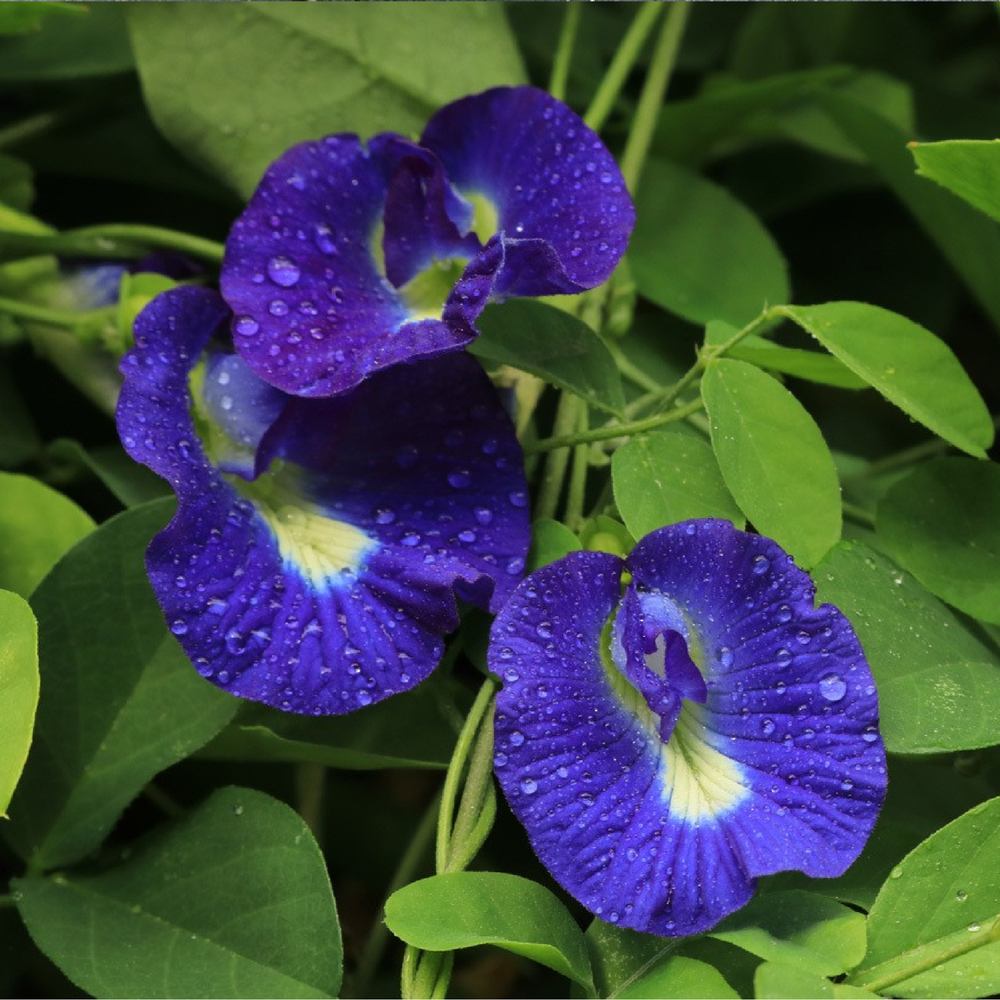BLUE TEA SEEDS
بذور الشاي الأزرق
- Shipping all over U.A.E
- Low stock - 9 items left
- Backordered, shipping soon
Blue tea seeds come from the Clitoria ternatea, commonly known as Butterfly Pea, a stunning flowering plant known for its vibrant blue blooms. These flowers are often used to make blue tea, which has a range of health benefits. Growing your own Butterfly Pea flowers from seeds is an enjoyable process, and with the right care, you can have a beautiful and beneficial plant at home.
Growing Blue Tea (Butterfly Pea) from Seeds
- Seed Preparation: Blue tea seeds have a hard outer coating, so it’s recommended to scarify them by lightly sanding or nicking the surface with a sharp tool. This helps water penetrate the seed coat, which speeds up germination.
- Soaking: After scarifying, soak the seeds in warm water for 12 to 24 hours. The seeds will absorb water and swell, making germination easier.
- Planting Depth: Sow the seeds about ½ inch (1.25 cm) deep in well-draining potting soil. Use seed trays or small pots to start the seeds indoors.
Light and Location
- Light Requirements: Blue tea plants thrive in full sunlight. Make sure they receive at least 6 to 8 hours of direct sunlight per day, whether grown indoors or outdoors.
- Indoor Planting: If you start the seeds indoors, place them near a bright, sunny window or use grow lights to ensure they get enough light.
- Outdoor Planting: Once the seedlings are strong enough (about 2 to 3 inches tall), you can transplant them outdoors. Choose a sunny spot with good air circulation.
Soil Requirements
- Soil Type: Blue tea plants prefer well-draining soil that is rich in organic matter. A mix of garden soil, compost, and sand or perlite helps ensure the roots stay healthy.
- Soil pH: The ideal soil pH for Butterfly Pea is slightly acidic to neutral, around 6.0 to 7.5.
Watering
- Germination Stage: Keep the soil evenly moist during the germination phase, but avoid overwatering as it can cause the seeds to rot. Lightly mist the soil or water gently to prevent washing away the seeds.
- After Germination: Once the seedlings have sprouted, water regularly, but allow the top inch of soil to dry out between waterings. Butterfly Pea plants do not like overly soggy soil but appreciate consistent moisture, especially during flowering.
- Mature Plants: Established plants are somewhat drought-tolerant but will flower better with regular watering. Make sure the soil drains well to avoid waterlogging.
Temperature and Humidity
- Optimal Temperature: Blue tea plants are tropical, so they thrive in warm climates. The ideal temperature range for growing Butterfly Pea is between 65°F and 85°F (18°C to 29°C).
- Cold Sensitivity: These plants are sensitive to frost and cold temperatures. If you live in a cooler region, grow them as annuals or bring potted plants indoors during colder months. They do best in USDA hardiness zones 10-11.
- Humidity: Butterfly Pea prefers moderate humidity levels. If you’re growing the plant indoors, maintaining moderate humidity through misting or using a humidifier can help, especially in dry climates.
Fertilization
- Feeding: To promote healthy growth and more flowers, apply a balanced liquid fertilizer every 4 to 6 weeks during the growing season (spring and summer). Avoid over-fertilizing, as this can lead to excessive foliage with fewer flowers.
- Organic Options: Compost tea or diluted fish emulsion can also be used as a natural fertilizer to boost blooming.
Care and Maintenance
- Trellising: Butterfly Pea is a vining plant, so it benefits from a support structure like a trellis or fence to climb. Provide support early on to encourage upward growth.
- Pruning: Light pruning helps encourage bushier growth and more abundant flowers. Trim back leggy growth or dead branches in late winter or early spring.
- Pests and Diseases: Butterfly Pea is generally resistant to pests but may occasionally attract aphids or caterpillars. Use organic insecticidal soap or neem oil to treat infestations. Make sure the plant gets plenty of air circulation to prevent fungal diseases.
Blooming
- Time to Flower: Blue tea plants can begin flowering within 3 to 4 months of planting under optimal conditions. The beautiful blue flowers typically bloom during the warmer months.
- Flower Harvest: To make blue tea, you can harvest the flowers once they are fully open. They can be used fresh or dried to make tea that changes color when mixed with lemon or lime juice.
If you looking for a wide range for Seeds. Please visit our online store. Click here
Thank you for shopping with us! We aim to deliver your order as quickly and safely as possible.
- Processing Time: Orders are processed within 1-2 business days.
- Shipping Time: Delivery usually takes 3-5 business days, depending on your location.
- Tracking: Once your order is shipped, you’ll receive a tracking number via email to monitor your shipment.
- Shipping Costs: Shipping fees will be calculated at checkout based on your location and order size.
- Delays: Please note that during holidays or high-demand periods, there may be slight delays.
If you have any questions about your order, feel free to contact our support team. We’re here to help!


